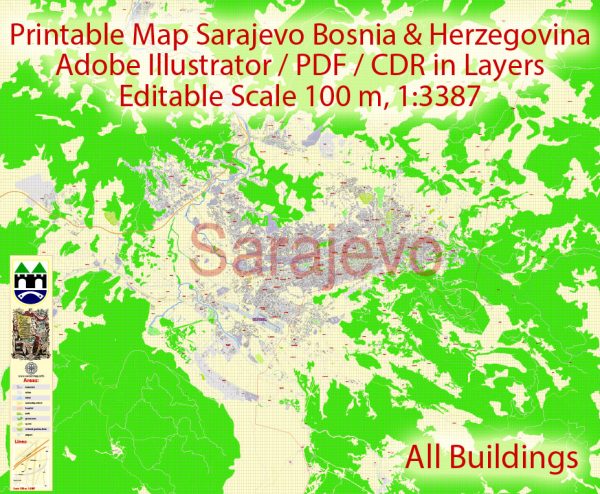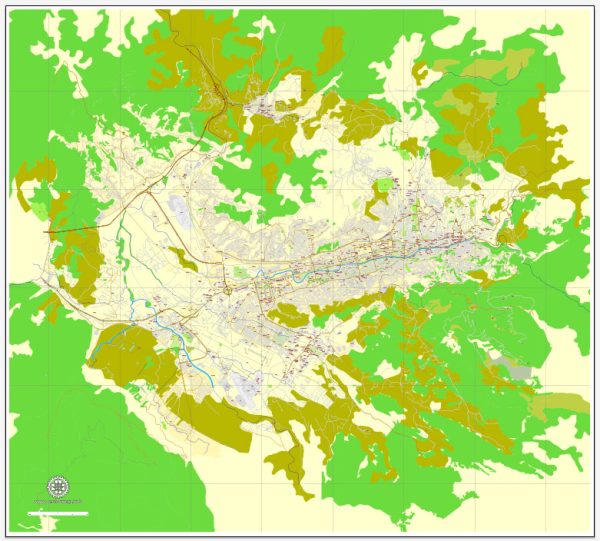Sarajevo, the capital city of Bosnia and Herzegovina, has a rich and complex history of urban development that reflects its diverse cultural influences and tumultuous past. The city is situated in a valley along the Miljacka River and is surrounded by the Dinaric Alps. Here’s an overview of Sarajevo’s history of urban development:
- Ottoman Period (15th-19th centuries):
- Sarajevo was founded by the Ottomans in the 15th century. The city quickly became an important administrative and trading center within the Ottoman Empire.
- The Ottomans left a significant architectural imprint on Sarajevo. The Bascarsija district, the old bazaar and the historical and cultural center of the city, was established during this period. It features narrow streets, mosques, and traditional Turkish-style architecture.
- Austro-Hungarian Period (late 19th-early 20th centuries):
- With the arrival of the Austro-Hungarian Empire in 1878, Sarajevo underwent a period of modernization and urban expansion.
- The Austro-Hungarians introduced new architectural styles, including neoclassical and secessionist elements. This is evident in buildings like the City Hall (Vijecnica) and the National Museum.
- The city’s infrastructure was improved with the construction of bridges, roads, and a tram network.
- Yugoslav Period (20th century):
- After World War I, Sarajevo became part of the Kingdom of Yugoslavia. During this time, the city continued to grow and modernize.
- In the latter half of the 20th century, Sarajevo became the capital of the Socialist Republic of Bosnia and Herzegovina within the Socialist Federal Republic of Yugoslavia.
- The urban development during this period included the construction of residential blocks, industrial zones, and cultural institutions.
- Bosnian War (1992-1995):
- Sarajevo suffered greatly during the Bosnian War, especially during the siege of the city from 1992 to 1995. Many historical buildings were damaged or destroyed.
- The war had a profound impact on the city’s population and infrastructure, and the scars of this conflict are still visible in some areas.
- Post-War Reconstruction (late 20th century – present):
- After the war, extensive efforts were made to rebuild and reconstruct Sarajevo. Many historical buildings were restored, and new developments emerged.
- The city has seen a mix of architectural styles, blending the old with the new, as it continues to recover and redefine itself in the post-war era.
Today, Sarajevo stands as a city with a diverse architectural heritage, reflecting the influences of its Ottoman, Austro-Hungarian, and Yugoslav past. It is a symbol of resilience and recovery, with a vibrant cultural scene and a mix of traditional and modern elements in its urban fabric.



 Author: Kirill Shrayber, Ph.D.
Author: Kirill Shrayber, Ph.D.